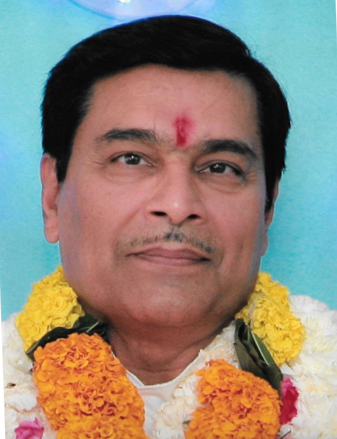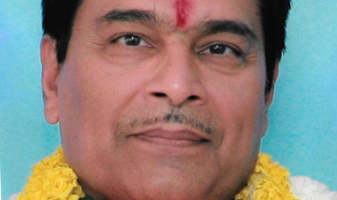From a satsang with Pt. Balram Persad, Spiritual Leader, SWAHA Om Shakti Mandali
There is a profound story that captures the essence of our spiritual journey: a snake, coiled and sleeping, can awaken in anger when disturbed, raising its hood to attack and emit poison. Yet, when a snake charmer plays music, the snake’s wrath subsides, soothed by the melody, and it begins to dance in joy. This tale mirrors the latent energy within each of us—the kundalini shakti—the spiritual energy coiled at the base of the spine.
All spiritual and yogic practices are aimed at awakening the dormant energy. When kundalini rises through the chakras, from the muladhaara (root) to the sahasrara (crown), it transforms our spiritual consciousness, enabling us to transcend the ordinary and connect with the divine.
Saraswati Devi and Our True Nature
Saraswati Devi, often referred to as the Goddess of wisdom, music and learning, teaches us that we are not here to emit poison, hate or harm. Instead, our purpose is to awaken to our true nature: “sat-chit-ananda”—divine truth, divine consciousness and divine bliss. This awakening is achieved through fasting, meditation, prayer and other spiritual practices.
When the internal power is tapped, we unlock our true potential. Advanced yogis manifest extraordinary spiritual powers because they have realised such energy. Similarly, Saraswati Devi inspires us to awaken the latent divinity within ourselves, guiding us toward enlightenment and enabling us to help others along their spiritual path.
Saraswati Jayanti is traditionally a time to pray for children’s success and bless their study implements, recognising the connection between knowledge and potential. Yet, the occasion holds another deep significance—it symbolises the awakening of our internal potential. Through dedicated effort, study and spiritual practice, we uncover possibilities we never imagined, including the discovery of our own divinity. This awakening, however, requires guidance. Just as a guru is essential to light our spiritual path safely, Saraswati Devi’s blessings illuminate the way to wisdom and enlightenment.
Saraswati Devi in the Ramaayana
The Ramaayana contains numerous examples of Saraswati Devi’s influence, emphasising her role as the Goddess of wisdom and divine intervention:
- Kumbhkaran’s Request: Kumbhkaran, the giant brother of King Raavan, once sought a boon from Lord Brahma. However, through Saraswati Devi’s intervention, he mistakenly asked for eternal sleep instead of wakefulness. This ensured his tyranny was curtailed, as he would sleep for six months at a time.
- Shree Raam’s Exile: When King Dasarath sought to crown Shree Raam as his successor, the Devas feared it was premature. They approached Saraswati Devi, and asked her to intervene by urging Manthara, Queen Kaikeyi’s maid, to sow seeds of dissent. This led to Shree Raam’s exile, a pivotal moment in the Ramaayana, setting the stage for Shree Raam’s divine mission.
- Hanumanji’s Wisdom in Lanka: When Hanuman was captured in Lanka and his tail set ablaze, the wicked rejoiced, clapping and dancing in mockery. Yet, Shree Hanuman, embodying wisdom and virtue, invoked Saraswati Devi, realizing the firelit tail was an opportunity. As he was paraded through Lanka, he memorised its layout, preparing for its eventual destruction.
Saraswati Devi reminds us that our true nature lies dormant, awaiting awakening. By nurturing wisdom, engaging in spiritual practices, and aligning ourselves with divine energy, we can transcend ignorance and realize our divine potential. Let us honour Saraswati Devi by seeking wisdom, learning and awakening the sleeping spiritual power within. Only then can we understand our true nature and excel in our spiritual journey.



